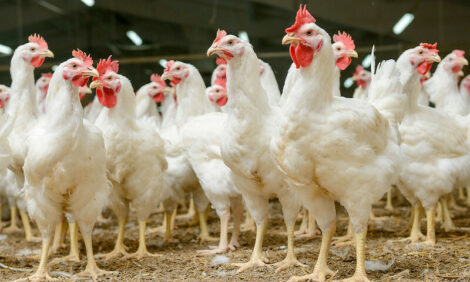



AECL Publishes Annual Report
AUSTRALIA - Australian Egg Corporation Limited (AECL) has published its 2008 Annual Report. An overview is offered here with a link to the full report.Industry Overview
- Production: 236.4 million dozen eggs per annum (2006/07)
- Flock size (approx): 15.271 million hens (as at 30 June 2007)
- State flock percentages: Victoria 30%; Queensland 28%; NSW/ACT 27%; WA/NT 10%; SA 3%; Tasmania 2%
- Retail prices (average): $4.44 per dozen (June quarter 2008)
- Number of egg producers: 440 (as at 30 June 2007)
- Gross value of production at farm gate: $398.0 million per annum (2006/07)
- Grocery/retail sales volume: 78.887 million dozen (24 December 2006 to 22 December 2007)
- Grocery/retail sales value: $268.8 million (24 December 2006 to 22 December 2007)
| Grocery/retail production system market share 2007 | ||
|---|---|---|
| Production system | Volume (%) | Value (%) |
| Cage eggs | 74.9 | 63.2 |
| Barn-laid eggs | 5.1 | 6.7 |
| Free-range eggs | 20.0 | 30.1 |
| Grocery/retail production system market share 2007 | ||
|---|---|---|
| Egg type | Volume (%) | Value (%) |
| Regular eggs | 95.4 | 93.7 |
| Vegetarian eggs | 2.6 | 2.8 |
| Organic eggs | 1.3 | 2.3 |
| Specialty eggs | 0.7 | 1.2 |
Executive Summaries
Market Awareness
The 2008 market awareness campaigns raised awareness of the fact that eggs are an essential part of a healthy diet and it also showcased the versatility and ease of eggs as a meal at any time of the day.
Market Education
In 2008, the Egg Nutrition Advisory Group (ENAG) was introduced to a larger audience, with the launch of The Good Egg newsletter and the presence of ENAG at the Dieticians Association of Australia conference, which firmly established ENAG as the place to go to for any nutrition and egg related matter. In addition, all information supplied to healthcare professionals by ENAG are now based on Australian egg nutritional values.
Supply Chain Enhancement
In 2008, AECL is proud to report that the egg industry has agreed upon using a standardised outer egg carton which is an important step in minimising the costs associated with ullage within the Supply Chain. AECL, as well as the industry, is committed to continue the ullage minimising work in coming years.
Public affairs & stakeholder relations
Throughout 2008 AECL has continued to work with producers to improve consumer understanding of the Australian egg industry and its challenges. This progression has been achieved through open communications strategies, improved media relations and policy management.
On-farm innovation & efficiency
In 2008, activities supported through the On-farm Innovation and Efficiency operating pillar have focused on increasing the involvement of egg producers in research and development projects that address issues relating to everyday on-farm operations. With greater producer participation in projects supported under the Egg Producer Research Innovation and Development (EPRID) Program, AECL has significantly increased the adoption of Research & Development (R & D) outcomes to deliver greater benefits to egg businesses in the short term and greatly enhance the overall relevance of the R & D program.
- Improving the industry's understanding of infectious bronchitis
- Examining the importance of nests for the welfare of laying hens
- Helping to ensure Australia's quarantine status
- Understanding egg quality on-farm
- Egg Corp Assured (national egg quality assurance scheme) guaranteeing a quality food product for the Australian consumer.
Australian Government R & D priorities
The Australian egg industry recognises that continual investment in R & D and industry/product innovation is vital for ongoing growth and improvement in the profitability and sustainability of the egg industry.
Further Reading
| - | You can view the full report by clicking here. |








